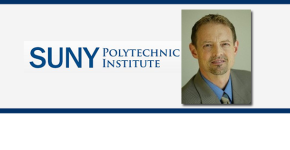 How do you give businesses a better chance to be innovative?
How do you give businesses a better chance to be innovative?
Robert Edgell, professor of technology management at SUNY Polytechnic Institute, explores the hidden intentions behind human communications and how they can hinder innovation.
Dr. Robert Edgell is an Assistant Professor of Technology Management at SUNY Polytechnic Institute and a Visiting Professor at the Swiss Business School in Zurich. Previously, he was a professor at American University’s Kogod School of Business and has taught at San Francisco State University’s College of Business.
His current scholarly research focuses on a range of interdisciplinary topics including media as a lever for corporate governance, responsible innovation and harm (in collaboration with colleagues from Stanford University Law School), top management team creativity processes, and entrepreneurial social impact.
Dr. Edgell received his Ph.D. in international multicultural management (magna cum laude) from the University of St. Gallen (AACSB accredited). He holds an MBA fromColumbia University Business School in the City of New York and a Bachelor of Architecture (5 year degree, cum laude) from Kent State University. Through Columbia’s Chazen Institute of International Business, he studied at the Rotterdam School of Management in The Netherlands. He is a registered architect and has studied at Harvard’s Graduate School of Design.
Innovation and Language
Innovation may be characterized as a series of collaborative communication events in which culturally diverse stakeholders engage in discursive practices. Usually these discourses work well and generate novel ideas that benefit society. However, sometimes they do not.
Accordingly, our investigation was driven by the question, How do different constituents, separated by distinct cultural views, interact and communicate when trying to collaboratively innovate?
Existing research indicates that we humans communicate through language choices with seven differing assumed or hidden intentions. By observing a simulated collaborative design situation, we were able to explore how these not-so-obvious intentions might help or hinder innovation processes.
We found that these constituents relied heavily on language that is most consistent with filtering and controlling intentions which may limit voice and power sharing. However, this may be necessary for providing a structured process when attempting to frame and solving large, complex, and unclear problems. Moreover, hindrance conflict on this multi-constituent team seemed to arise not from “misunderstandings”, but rather from incompatibilities of the differing intentions associated with constituents’ language choices.
Perhaps simply helping innovation team constituents become more aware of language options and associated hidden intentions, might help them generate more novel ideas and benefits.
